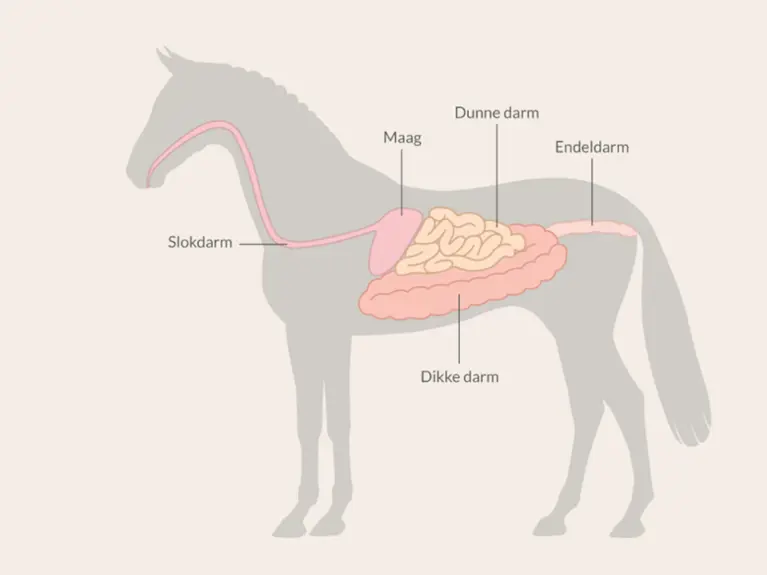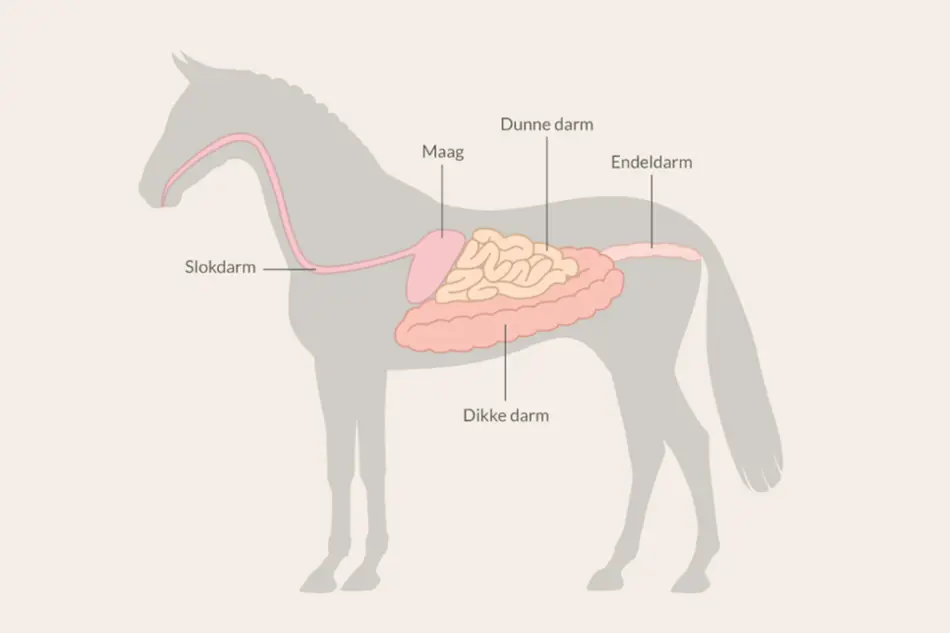
How does a horse digestion work?
By nature, a horse is a true grazer. Its digestive system is adapted to this, with a small stomach and a well-developed cecum and large intestine. Good digestion plays a vital role in the overall health of your horse or pony.
Mouth and esophagus
Digestion begins in the mouth. Chewing produces saliva, which helps food move smoothly through the esophagus. Feed that is high in fiber and structure encourages chewing. The more a horse chews, the better the nutrients are ultimately absorbed. Once swallowed, the esophagus carries the feed from the mouth to the stomach.
Stomach
A horse’s stomach is relatively small because, in nature, horses graze throughout the day and take in small amounts of feed continuously. This creates a steady flow of food from the stomach to the intestines. The stomach consists of two parts. The upper section contains no glands but does harbor a beneficial bacterial population that ferments starch into, among other things, lactic acid. The glands in the lower section secrete gastric juices and enzymes. Gastric juice neutralizes harmful bacteria that enter with the feed, while enzymes begin breaking down fats and proteins.
Small intestine
From the stomach, feed moves into the small intestine. Here, starch, proteins, and fats are digested. Large molecules of starch, protein, and fat are broken down into smaller units through the uptake of water. Once small enough, they can be absorbed through the intestinal wall. Enzymes such as amylase, trypsin, and lipase play an important role in this process.
Cecum and large intestine
After the small intestine, feed enters the cecum and large intestine. Here, fibers are broken down by a population of bacteria, fungi, and other microorganisms. These microbes feed on what the horse eats, converting plant cell walls into fatty acids that the horse can use as an energy source. In addition to fiber, small amounts of protein and fat can also be digested here. Electrolytes and water are absorbed as well. As water is absorbed through the intestinal wall, the remaining feed material thickens, beginning the formation of manure balls.
Rectum
In the rectum, more water is absorbed and the manure balls are further formed before being excreted at regular intervals.


